1. “Frito Bandito” (1967-1971)
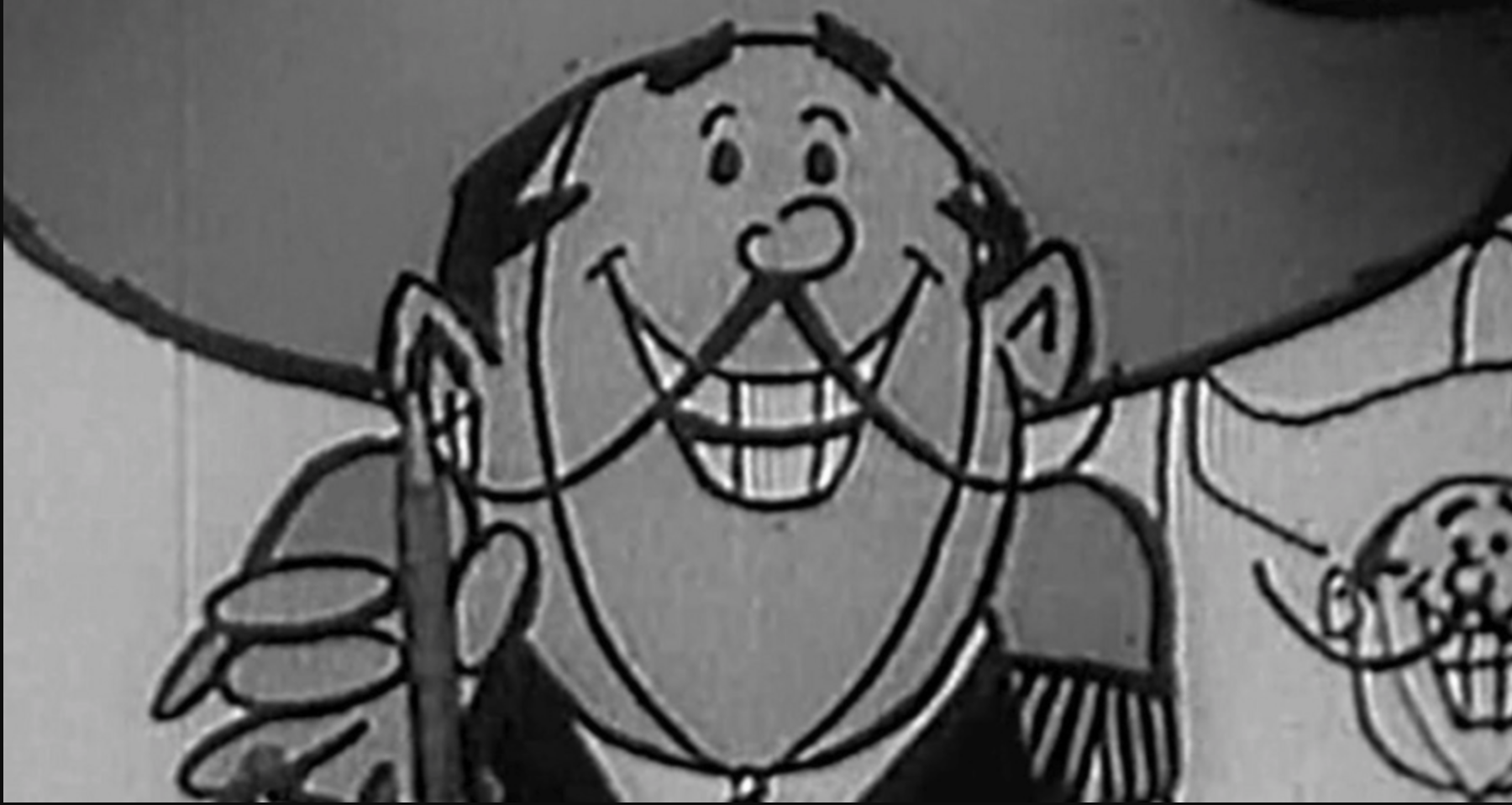
The Frito Bandito campaign featured a cartoon Mexican character with a sombrero and a thick accent, singing about his love for Fritos corn chips. While it was considered playful and entertaining at the time, the portrayal leaned heavily on stereotypes, reinforcing harmful caricatures of Mexican people. The character’s exaggerated accent and mannerisms weren’t just insensitive—they perpetuated a one-dimensional view of an entire culture.
In today’s cultural climate, this kind of ad would be criticized for its lack of respect and understanding of cultural identity. It oversimplified and mocked a heritage, reducing it to a few clichés for the sake of selling snacks. Brands are now held accountable for how they represent different communities, with an expectation of authenticity and inclusivity. The Frito Bandito might have been catchy in its day, but modern audiences would view it as an offensive relic of a less enlightened time.
2. “Joe Camel: Smooth Character” (1980s-1990s)

The Joe Camel campaign is infamous for its thinly veiled targeting of underage audiences, Stanford University unveiled in an article. This cigarette ad series featured a cartoonish camel with a suave persona, often depicted in settings like pool halls or music clubs, making smoking seem “cool.” While the ads technically aimed at adults, critics quickly pointed out how the colorful, playful design appealed to kids and teens. The campaign was so effective at attracting young smokers that it became a public health scandal, leading to its eventual ban in the late ’90s.
Today, the backlash against such blatant marketing to vulnerable populations would be immediate and overwhelming. Anti-smoking campaigns have made significant strides in exposing the dangers of tobacco, and any attempt to glamorize smoking—let alone to children—would be universally condemned. The Joe Camel ads serve as a stark reminder of how far advertising ethics have come and how quickly public sentiment can shift against harmful messaging.
3. “A Diamond Is Forever” by De Beers (1940s-1990s)
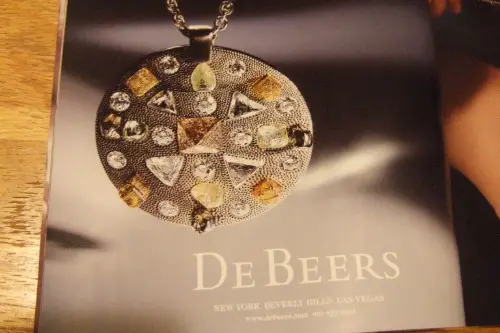
This long-running campaign convinced generations that true love could only be expressed with an expensive diamond ring. The ads perpetuated the idea that a man’s worth as a partner was tied to how much he spent, while a woman’s value was tied to receiving such a gift. According to The Drum, this ad was also a way of boosting the sale of diamonds, which had dropped since the Great Depression. By equating love with materialism, De Beers successfully created a cultural norm that persists to this day. The tagline, “A Diamond Is Forever,” even implied that relationships without a diamond lacked permanence or meaning.
Modern audiences might reject this messaging for its outdated gender dynamics and blatant consumerism. The campaign also glosses over the darker side of the diamond industry, including labor exploitation and environmental destruction. In an era when ethical consumption and equality in relationships are more valued, the De Beers ads would likely face intense scrutiny. The idea that love should be commodified feels increasingly out of step with today’s priorities, where sustainability and authenticity take center stage.
4. “Pepsi’s Kendall Jenner Protest Ad” (2017)
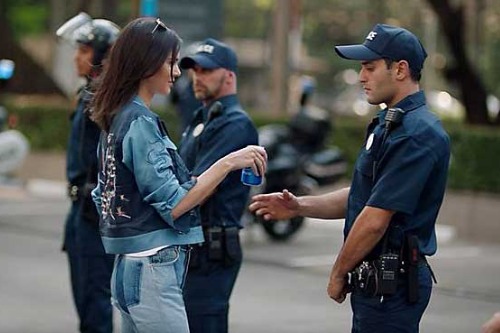
Although more recent than the others, this Pepsi ad deserves a place on the list for how quickly it became a cautionary tale in tone-deaf advertising. In the commercial, Kendall Jenner leaves a modeling shoot to join a protest, ultimately “solving” the tension between demonstrators and police by handing an officer a can of Pepsi. The ad was widely panned for trivializing social justice movements and co-opting their imagery for corporate gain, according to The New York Times.
Today, the backlash would likely be even more intense, as audiences have become increasingly critical of brands attempting to profit from activism without demonstrating real commitment to the causes they depict. The ad’s failure to understand the gravity of the issues it referenced—police brutality, systemic inequality, and civil unrest—highlights the risks of using social movements as mere marketing props. It’s a reminder that authenticity and cultural sensitivity are non-negotiable in modern advertising.
5. “Calgon, Take Me Away!” (1970s)
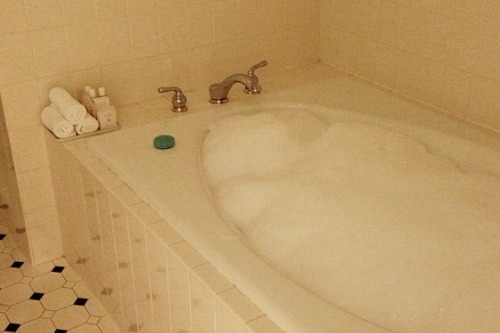
According to The Retroist, this iconic bubble bath commercial became a cultural catchphrase in the ’70s, capturing the frustrations of stressed-out housewives everywhere. The ad depicts a frazzled woman overwhelmed by a demanding husband, needy children, and a messy house. Her only salvation? A blissful soak in a Calgon bubble bath to “escape” her troubles. While this resonated with women of the time, who were often confined to traditional domestic roles, the ad’s framing of stress relief feels more like a Band-Aid than a real solution. It suggests that a woman’s life revolves around service to others, and her happiness comes second.
Today, this depiction would face criticism for perpetuating outdated gender roles and ignoring the realities of shared responsibilities in modern families. The idea that women are the default homemakers and caregivers doesn’t align with contemporary values of equality and partnership. It also raises questions about the absence of men in the equation—where’s dad in this scenario, and why isn’t he pitching in? Modern audiences would likely reject the ad’s narrow view of womanhood and its simplistic suggestion that a bubble bath is the answer to systemic gender inequality.
6. “Charlie Perfume: A Woman’s Got to Be Strong” (1970s)
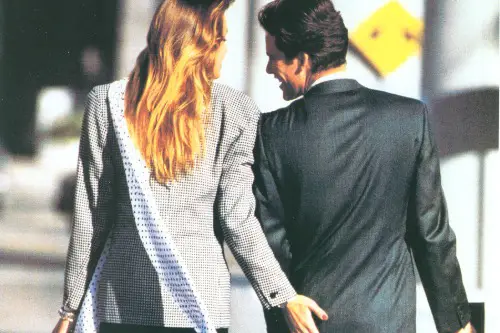
Revolutionary for its time, Charlie Perfume commercials from the ’70s featured confident, independent women walking into boardrooms, strutting down streets, and taking control of their lives, Go Retro explains. The jingle boasted that “a woman’s got to be strong,” which felt empowering in an era when female independence was gaining traction. However, the visuals undercut the progressive tone by reinforcing narrow beauty standards. The Charlie women were always tall, thin, perfectly coiffed, and undeniably glamorous—implying that strength and success were tied to physical appearance.
In today’s advertising landscape, this juxtaposition would likely spark backlash for its lack of inclusivity. Modern consumers expect brands to showcase diverse representations of beauty and strength, and this ad’s focus on one specific “type” of woman feels tone-deaf by contemporary standards. While it paved the way for women-centric messaging, its unintentional reinforcement of impossible beauty ideals makes it a relic of a more restrictive era. The message of empowerment would have to be reimagined entirely to meet today’s expectations of authenticity and inclusivity.
7. “Ajax: The White Knight” (1950s)
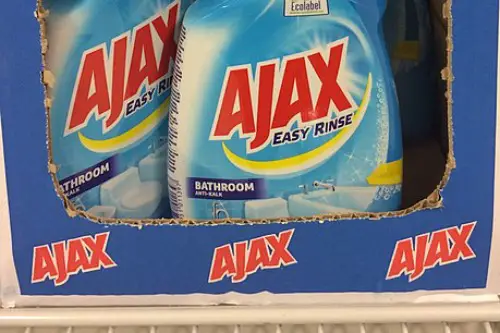
This classic cleaning product ad featured a literal “white knight” who rode in to save housewives from dirty floors. While the knight’s shiny armor symbolized the product’s ability to clean thoroughly, the ad’s messaging reinforced the idea that cleanliness and domesticity were solely women’s responsibilities. It also portrayed women as helpless, relying on a (male) savior to solve their problems.
If this ad aired today, it would face criticism on multiple fronts. First, its gendered assumptions about who cleans would feel outdated and exclusionary. Second, the imagery of a “white knight” could be viewed as racially insensitive, given its focus on whiteness as a symbol of purity and superiority. Modern ads for cleaning products focus on shared household responsibilities, often featuring diverse families and challenging outdated stereotypes. The Ajax knight, while a clever visual metaphor in its time, would need a major overhaul to resonate with today’s audiences.
8. “Aunt Jemima Pancake Mix” (1920s-2020)
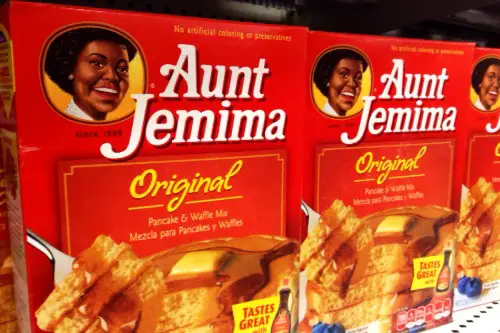
For decades, Aunt Jemima ads featured the character of Aunt Jemima, a Black woman portrayed as a cheerful cook. Originally inspired by minstrel stereotypes, the character embodied the “mammy” archetype, a deeply racist and reductive depiction of Black women. While the brand attempted to modernize Aunt Jemima’s image over the years, the character’s origins remained problematic and emblematic of systemic racism.
In today’s world, this kind of branding would never get off the ground. Consumers now demand accountability for the historical context behind brand mascots and logos, particularly those rooted in exploitation and oppression. In 2020, the company finally retired the Aunt Jemima name and image, rebranding as Pearl Milling Company. This move highlighted a broader cultural shift toward rejecting harmful stereotypes and acknowledging the importance of cultural sensitivity in marketing.
9. “Virginia Slims: You’ve Come a Long Way, Baby” (1968-1980s)
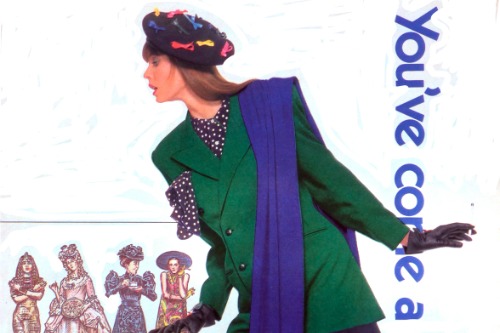
Virginia Slims ads targeted women with the tagline “You’ve Come a Long Way, Baby,” celebrating women’s liberation—while selling cigarettes. The ads often featured glamorous women in stylish clothing, smoking as a symbol of independence. While the campaign was groundbreaking in its appeal to female empowerment, its underlying message was contradictory, as it promoted a harmful product under the guise of progress.
In today’s more health-conscious era, this campaign would be torn apart for its cynical exploitation of feminist ideals. It’s hard to imagine any brand associating cigarettes with empowerment without facing major backlash. Additionally, the campaign’s focus on thin, conventionally attractive women as the epitome of success would feel exclusionary and regressive. Modern consumers are more skeptical of brands that use social movements as a marketing tool without addressing their deeper implications.
10. “Mr. Whipple: Please Don’t Squeeze the Charmin” (1964-1985)
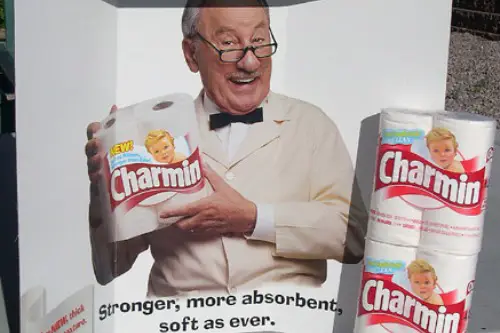
This long-running campaign featured Mr. Whipple, a grocery store manager obsessed with preventing customers from squeezing Charmin toilet paper. The humor stemmed from Mr. Whipple’s exaggerated reactions, but his behavior—scolding women for their actions—reinforced gender stereotypes. Women were the primary subjects in these ads, subtly suggesting that toilet paper shopping was “women’s work.”
While this may seem like harmless fun, today’s audiences are much more aware of the subtle ways advertising perpetuates gender roles. The ads also created a weirdly uncomfortable dynamic, with Mr. Whipple’s overbearing presence coming across as creepy rather than comedic. In a modern context, brands go out of their way to avoid reinforcing stereotypes or alienating consumers with outdated tropes. The humor of Mr. Whipple might have worked in his time, but today it would need a major rework to avoid criticism.
11. “Benetton: Shockvertising Campaigns” (1980s–1990s)
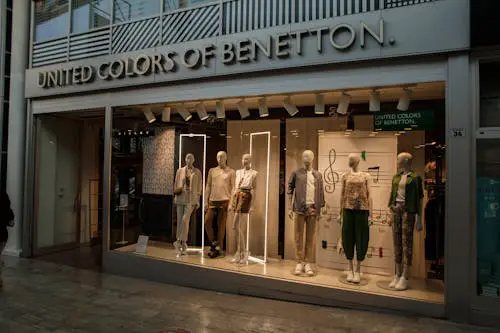
Benetton made headlines with its controversial “shockvertising” campaigns, which featured provocative images like a man dying of AIDS, a bloodied newborn baby, and a nun kissing a priest. The ads, created by photographer Oliviero Toscani, were intended to provoke thought about global issues—racism, war, disease—but often did so in ways that felt exploitative. By attaching its brand to emotionally charged imagery, Benetton blurred the line between activism and consumerism. Critics accused the company of using human suffering as a gimmick to sell clothes.
Today, using trauma and taboo subjects for brand promotion would invite immediate backlash. Audiences are more sensitive to performative activism and expect brands to demonstrate actual investment in the causes they reference. Without tangible support behind the imagery, campaigns like Benetton’s would be labeled tone-deaf or manipulative. Social consciousness in advertising now requires sincerity—not just shock value.
12. “McDonald’s Hula Burger Ad” (1960s)

In an attempt to cater to Catholic customers who avoided meat on Fridays, McDonald’s introduced the “Hula Burger”—a slice of pineapple with cheese on a bun. The ad featured island-themed imagery and stereotypical Hawaiian music and visuals, portraying Polynesian culture as exotic and quirky. It reduced an entire cultural identity to a novelty item designed for quick laughs and quick sales. Unsurprisingly, the product flopped, but the campaign lives on as a reminder of tone-deaf branding.
If launched today, the ad would be called out for cultural appropriation and misrepresentation. The casual use of stereotypes for marketing—even with good intentions—fails to respect the people and traditions being portrayed. Brands today are expected to consult cultural voices and represent communities with nuance. The Hula Burger wasn’t just a bad product—it was a shallow depiction of a vibrant culture.
13. “Chew Mail Pouch Tobacco Barn Ads” (Mid-20th Century)
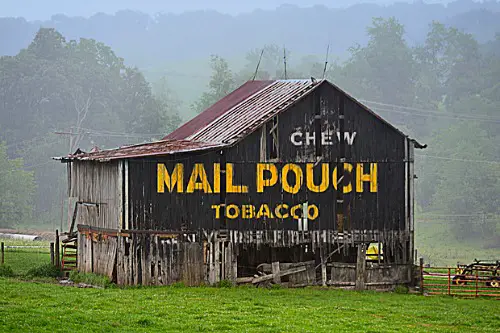
For decades, barns across rural America were painted with the slogan “Chew Mail Pouch Tobacco” in bold letters, often offered as free advertising in exchange for a fresh coat of paint. These ads appeared near highways and on farms, exposing adults and children alike to tobacco branding in everyday life. The campaign normalized chewing tobacco, glossing over its health risks in favor of catchy Americana appeal. It made tobacco use seem rustic and traditional, without acknowledging the associated dangers.
Today, public health campaigns and advertising regulations would prevent such blatant tobacco promotion, especially in rural and youth-exposed areas. The visual saturation of these ads created a cultural comfort with tobacco that modern standards simply wouldn’t tolerate. There’s now a strong push for tobacco-free messaging, especially in public-facing spaces. What once seemed folksy and innocent now looks like a health hazard painted in nostalgia.
14. “Goody Powder: Tough Guy Relief” (1980s–1990s)
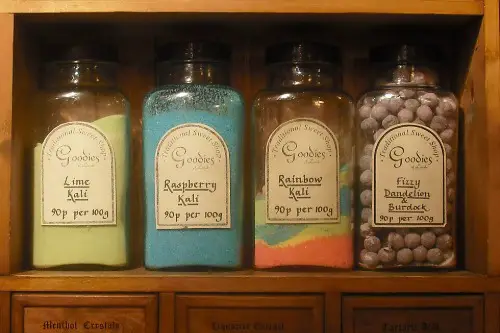
Goody Powder headache relief ads often featured rugged men working physically demanding jobs who toughed out pain—until they turned to Goody’s. The messaging was clear: real men didn’t complain, they just took a powder and got back to work. It was a hyper-masculine portrayal that dismissed self-care and equated pain tolerance with masculinity. The product was framed as a badge of toughness, not wellness.
In today’s era of mental health awareness and workplace safety, this messaging would be seen as toxic. Modern audiences are rejecting the notion that men must suppress discomfort to prove their strength. The ad’s dismissal of self-care reinforces unhealthy norms that now face intense scrutiny. Compassion, vulnerability, and wellness are no longer viewed as signs of weakness, especially in men.
15. “Shake ‘n Bake: “And I Helped!”” (1970s)
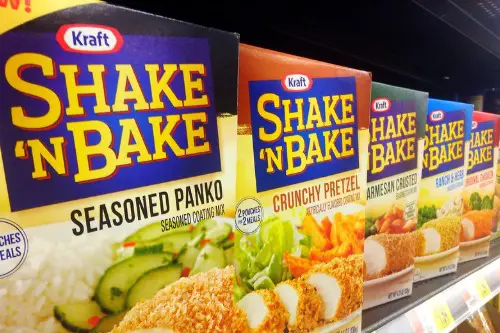
This ad featured a young girl helping her mom cook dinner with Shake ‘n Bake, proudly declaring, “And I helped!” The commercial emphasized traditional domestic roles—mom cooks, daughter assists—reinforcing the idea that cooking is women’s work. Men were nowhere in sight, and the ad subtly positioned family bonding as something that happened only in the kitchen, and only between women. The cheerful tone masked a narrow view of gender and family dynamics.
Today, brands strive to show diverse family structures and equitable roles in the household. Ads like this one would be challenged for sidelining fathers and promoting outdated gender norms. Encouraging kids to help in the kitchen is great—but only when it’s shown as inclusive, not gendered. The phrase “And I helped!” might live on in pop culture, but the ad’s assumptions wouldn’t fly today.
16. “Bic Pens for Her” (2012)
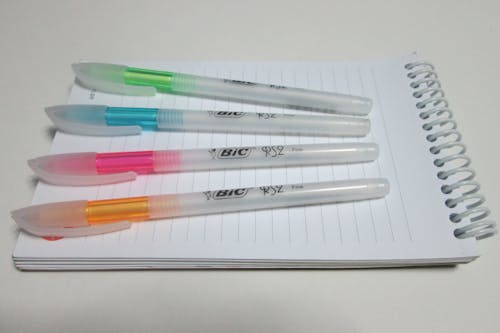
Though shockingly recent, the Bic “Pens for Her” campaign marketed pastel-colored pens “designed to fit a woman’s hand.” The implication was that women needed separate, daintier tools to complete everyday tasks like writing. The ads were met with immediate ridicule, as they reinforced the notion that women were somehow different or lesser—even when it came to basic office supplies. Ellen DeGeneres famously mocked the campaign, highlighting its absurdity.
In today’s marketing world, such overt gender stereotyping would be swiftly canceled. Consumers expect products to be inclusive, not condescending. The backlash to “Pens for Her” shows how quickly public sentiment can turn on brands that underestimate their audience. It’s a modern case study in how not to segment your market.
17. “Toys ‘R’ Us Gendered Toy Commercials” (1980s–1990s)
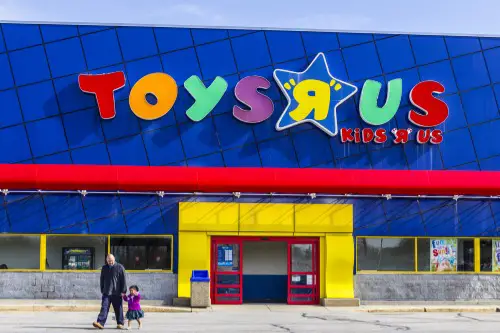
Toys ‘R’ Us and other toy brands often aired commercials that strictly separated toys by gender. Boys played with trucks, science kits, and action figures; girls were shown brushing doll hair or playing house. The color schemes were just as coded—blue for boys, pink for girls—and the messaging taught children early on what was “for them.” These ads didn’t just sell toys; they sold gender expectations.
Today, this type of marketing would face serious criticism for limiting children’s identities and interests. There’s been a growing call for gender-neutral advertising and products that empower all kids to explore freely. What once felt “normal” now reads as reductive and outdated. Modern parents and advocates are pushing for play that reflects diversity, not division.
18. “Hardee’s/Carl’s Jr. “Burger Babes” Ads” (2005–2015)

Hardee’s and Carl’s Jr. ran a series of infamous ads featuring scantily clad women eating burgers in slow motion. These commercials leaned heavily into male fantasy, using sexual imagery to sell fast food. Models like Paris Hilton and Kate Upton were shown in car washes and beach scenes, dripping sauce and innuendo. The message? Sex sells—even if it’s just a cheeseburger.
In today’s advertising world, these commercials would be dragged for objectifying women and reducing them to props. The blatant male gaze and lack of inclusivity would face massive pushback from both consumers and watchdog groups. Brands now understand that aligning with empowerment and diversity is a better long-term strategy than relying on cheap shock value. The “burger babe” era is over—and good riddance.
This post Classic American TV Ads That Would Be Canceled Today was first published on American Charm.


